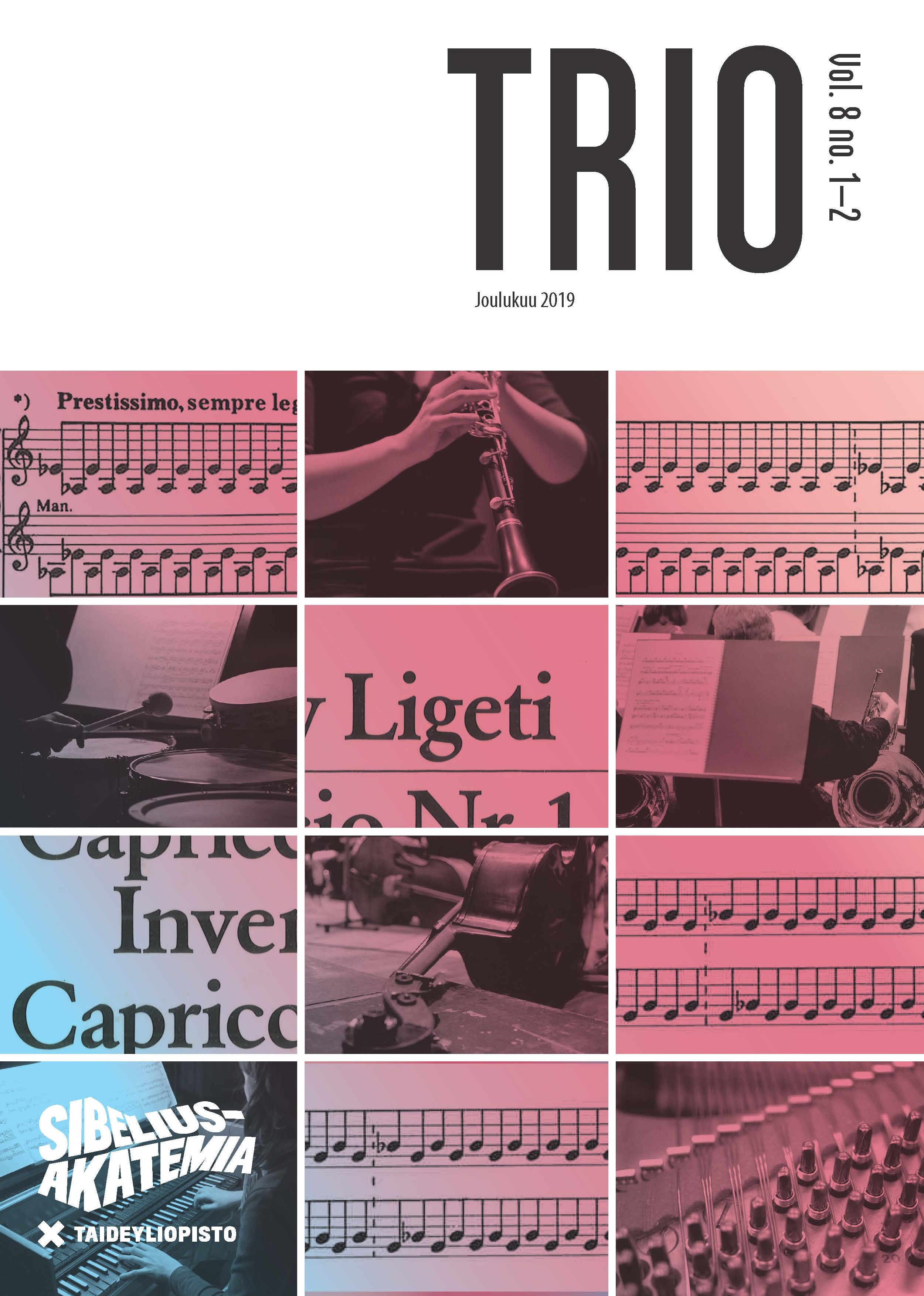Aspects of melodic and rhythmical textures in György Ligeti’s micro and macro polyphony
Abstrakti
The subject of this article falls within my previous musicological research on contemporary era and is focused on the exploration of the methods which György Ligeti applied on a number of his chamber, orchestral and solo works, to generate various, previously unheard, interactive textures. Although Ligeti’s aesthetic trajectory is differentiated from his contemporaries “pure” sonoristic composers (Penderecki, Lachenmann, Sciarrino and others), his polyphonically constructed textures often create diversiform sonoristic environments, based more on melodic and rhythmic material and less on timbral extension for each particular musical instrument. In addition to Ligeti’s orchestral masterpieces, the works Ramifications (1968–69), Chamber Concerto (1969–70), Melodien (1971), and Piano Etudes No. 3 and No. 4 from the first book (1985) are some representative examples of the above aesthetic direction. Through analysis of particular extracts from the above-mentioned works, this paper will attempt to demonstrate a number of applied compositional principles, in order to explore both the micro- and macro-structure of “Ligetian” micropolyphonic textures. In addition, innovative, sophisticated techniques, such as the blocked keys in Etude No. 3 and the repetition of pitches combined with sfz-p subito dynamics in the Chamber Concerto’s second movement, have been proved to be strong tools in the attempt to achieve rhythmical complexity, characterised by ultimate levels of rhythmic accuracy. Various pitch (or pitch-class) sets and intervallic ratios are often used as starting points for the generation of multi-layer canonic textures and imitative passages. Both the horizontal (melodic) and the vertical (harmonic) organisation of the pitch material form structures of linear sonic events, which in turn consist of multiple interactive, polyrhythmic gestures. Ligeti’s distinguishable polyrhythmical, sonoristic, effect often occurs from several types of linear and non-linear arithmetic series and sets which will be analysed and examined. In summary, based on particular extracts of the works mentioned above, this paper will focus on: • How Ligeti’s micropolyphonic techniques create a variety of sonoristic textures and • How Ligeti’s micropolyphony forms sophisticated macro-polyphonic structures • Arithmetic series which dominate the rhythmical construction of these works and on ways they affect the overall textural plan of each work.Tiedostolataukset
Julkaistu
2019-12-20
Numero
Osasto
Vertaisarvioidut artikkelit





